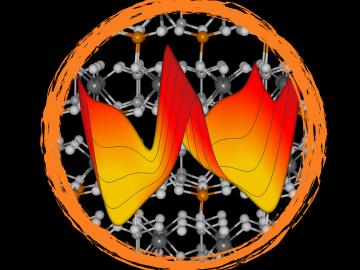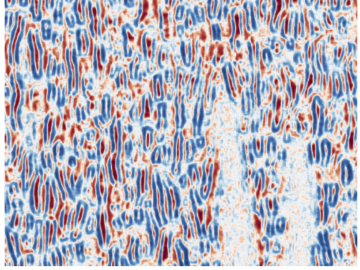
Filter News
Area of Research
- Advanced Manufacturing (13)
- Biological Systems (1)
- Biology and Environment (41)
- Building Technologies (2)
- Clean Energy (129)
- Climate and Environmental Systems (2)
- Computational Biology (1)
- Computational Engineering (3)
- Computer Science (12)
- Electricity and Smart Grid (1)
- Fusion and Fission (14)
- Fusion Energy (7)
- Isotopes (12)
- Materials (70)
- Materials for Computing (18)
- Mathematics (1)
- National Security (12)
- Neutron Science (39)
- Nuclear Science and Technology (12)
- Quantum information Science (6)
- Sensors and Controls (1)
- Supercomputing (52)
- Transportation Systems (2)
Date
News Topics
- 3-D Printing/Advanced Manufacturing (41)
- Advanced Reactors (9)
- Artificial Intelligence (19)
- Big Data (12)
- Bioenergy (22)
- Biology (23)
- Biomedical (15)
- Biotechnology (6)
- Buildings (13)
- Chemical Sciences (7)
- Clean Water (13)
- Climate Change (11)
- Composites (8)
- Computer Science (65)
- Coronavirus (10)
- Critical Materials (4)
- Cybersecurity (10)
- Decarbonization (7)
- Energy Storage (30)
- Environment (58)
- Exascale Computing (4)
- Frontier (6)
- Fusion (13)
- Grid (16)
- High-Performance Computing (19)
- Isotopes (13)
- ITER (4)
- Machine Learning (6)
- Materials (32)
- Materials Science (42)
- Mathematics (1)
- Mercury (4)
- Microscopy (15)
- Molten Salt (1)
- Nanotechnology (16)
- National Security (7)
- Net Zero (1)
- Neutron Science (36)
- Nuclear Energy (23)
- Physics (9)
- Polymers (7)
- Quantum Computing (5)
- Quantum Science (22)
- Security (5)
- Space Exploration (8)
- Statistics (1)
- Summit (18)
- Sustainable Energy (43)
- Transportation (33)
Media Contacts

Jeremy Busby, director of the Reactor and Nuclear Systems Division at the Department of Energy’s Oak Ridge National Laboratory, has been elected fellow of the American Nuclear Society for his contributions to developing materials for nuclear energy

A scientific team from the Department of Energy’s Oak Ridge National Laboratory and Vanderbilt University has made the first experimental observation of a material phase that had been predicted but never seen.

The U.S. Department of Energy’s Office of Science announced allocations of supercomputer access to 47 science projects for 2020.

Electrons in atoms are pretty talented. They can form chemical bonds, get kicked out of the atom and even “jump” to different locations based on their energetic states.

Oak Ridge National Laboratory will give college students the chance to practice cybersecurity skills in a real-world setting as a host of the Department of Energy’s fifth collegiate CyberForce Competition on Nov. 16. The event brings together student teams from across the country to compete at 10 of DOE’s national laboratories.

Buildings use 40 percent of America’s primary energy and 75 percent of its electricity, which can jump to 80 percent when a majority of the population is at home using heating or cooling systems and the seasons reach their extremes.

The Director’s Awards were presented by ORNL Director Thomas Zacharia during Saturday night’s annual Awards Night event hosted by UT-Battelle, the management and operating contractor of ORNL for the Department of Energy.

Beyond solids, liquids, gases, plasma, and other examples only accessible under extreme conditions, scientists are constantly searching for other states of matter.

Scientists at the U.S. Department of Energy’s Brookhaven National Laboratory have new experimental evidence and a predictive theory that solves a long-standing materials science mystery: why certain crystalline materials shrink when heated.

Oak Ridge National Laboratory researchers will lead two new projects and support seven more to enhance the reliability and resilience of the nation’s power grid as part of the U.S. Department of Energy’s 2019 Grid Modernization Lab Call.


